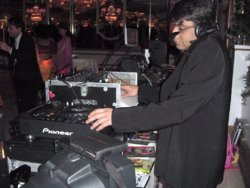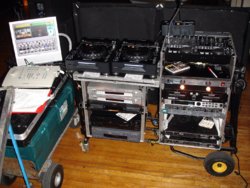So you hate the scratching and "fapping"?
- Thread starter djcrazychris
- Start date
You are using an out of date browser. It may not display this or other websites correctly.
You should upgrade or use an alternative browser.
You should upgrade or use an alternative browser.
My daughter loves the onion volcanones, the guys here at one we visit do the a train whistle to go alone with it, she just eats it up.if we were all hibachi chefs... doing our onion volcanoes....
cc
Hopefully they don't do it like this ..My daughter loves the onion volcanones, the guys here at one we visit do the a train whistle to go alone with it, she just eats it up.
lol uhh damn, that was a pretty decent size explosion , no, so far, not like that thankfullyHopefully they don't do it like this ..
View: https://www.youtube.com/watch?v=vlZ4_FWfxJI&feature=youtu.be&t=34
I ripped my CD’s and put them on my home server years before DJ’s were playing MP3’s... long before there were DJ controllers and DJ applications like Serato, Traktor, or Virtual DJ. I did it because I had collected thousands of CD’s between 1985 and 1995, and was tired of having to search through shelves of CD’s to find what I wanted to play. I had never even thought about being a DJ back then; just liked making playlists and having music play for hours unattended on a computer I built and attached to my home stereo. I went through several music library management applications before finding MusicMatch Jukebox in 1998. Many of us here were on the bleeding edge of digital music technology more than 20 years ago.
Last edited:
I said I would never become a computer DJ years ago. I used to use CDs. I didn't see how I would remember what is what and where a song was at. Today I can't see me being nothing but a computer DJ. It took some getting used to but I eventually figured it out.
Fixed that for ya.I said I would never become acomputer DJperson playing music on a computer years ago. I used to use CDs. I didn't see how I would remember what is what and where a song was at. Today I can't see me being nothing but acomputer DJperson playing music on a computer. It took some getting used to but I eventually figured it out.
Re-Fixed that for ya.
And you are right.I said I would neverbecome a computer DJ years ago. I used to use CDs. I didn't see how I would remember what is what and where a song was at. Today I can't see me being nothing but a computer DJ. It took some getting used to but I eventuallyfiguredit out.
WOW!
There's a blast from the past!
Those were the first professional players we used at the radio station.
Funny thing is...they were so expensive at the time (new technology + pro equipment)
that we could not afford to buy them ourselves.
We had a local tech store order two
and we paid for them by trading with them for advertising.
One of my friends actually had the technics cd player when it first came out in his living room. He worked at a radio station in NYC but at that time 1984 no one was really thinking about using CDs for DJing.
Much later I was able to get the Pioneer DVD DVJ-X1s, they were crazy expensive too, only a few had them and The only way to really manipulate video. I believe they were around 5K for the pair not counting the switcher and cases. Less than a month after receiving them I get a call from a referral from Promo Only for a guy who needs them for a high-end Indian wedding. Well, at paid for a sizable chunk right out the blocks. Since I specialize in Video Dance Parties it was a must buy as using computers for Video DJing was years away.

Much later I was able to get the Pioneer DVD DVJ-X1s, they were crazy expensive too, only a few had them and The only way to really manipulate video. I believe they were around 5K for the pair not counting the switcher and cases. Less than a month after receiving them I get a call from a referral from Promo Only for a guy who needs them for a high-end Indian wedding. Well, at paid for a sizable chunk right out the blocks. Since I specialize in Video Dance Parties it was a must buy as using computers for Video DJing was years away.


in order to manipulate the music to slow down or speed up you have to be able to control it like a record...aka... draw the song backwards and forward... the entire essence of scratching... its the same technology. and its roots were in the needs of dj's who scratch...fap...mix....etc...
cc
Your technical knowledge is way off, but I get your point. Yes, the evolution of DJ gear IS and ALWAYS HAS BEEN driven by the demands of club and performance DJs. While the mobile will never admit it - the entire mobile DJ biz is an imitation of the nightclub and stage arena.
As for mixing with time code, that technology had been around for a long time - used principally in commercial and broadcast video editing prior to the advent of personal computers. It was extremely expensive and well beyond the access of any DJ not affiliated with a major production house. Anyone old enough to have been a video jock in the early 1980's would be familiar with SMPTE time code, jog dials, and the UMatic formats in which the music videos were edited and distributed.
You don't even see pitch control for a CD player until well into the personal computer revolution. Technics produced a CD player aimed at DJs around 1983 that featured a pitch slider much like the SL-1200 Turntable but it cost around $4,000.00 By 1985 the cost had droped by more than half. Other budget models began showing up in dual format but, their performance and reliabilty were lacking. When buffered memory became feasible the all important instant start finally made it's way into the CD players intended for DJs, and later was expanded to a range capable of shock and skip-protection.
A lot of what led us here is from advances in PC technology. Fame-sync made video DJing affordable outside of the clubs since it eliminated the need for Gen-Lock or true time base correction. Prior to that a good TBC for pre-recorded sources could run $10,000 and you'd need one for each input source.
While the MP3 dominates in what is now a software environment - that was not initially the case. The MP3 format was never intended to become a distribution format. It's accommodation in CD players shows up AFTER consumers and file sharing put it front and center in the music industry.
Last edited:


